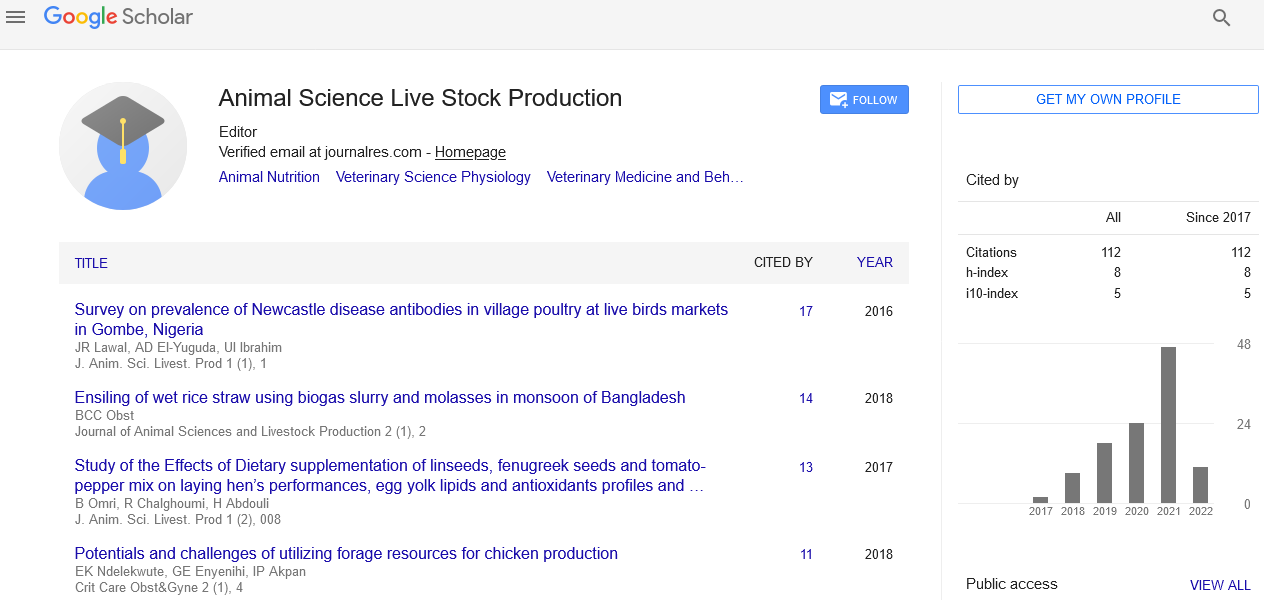Short Communication - (2024) Volume 8, Issue 4
Understanding Bovine: An Insight into Cattle and Their Role in Agriculture and Society
Daichi Sato*
Department of Animal Sciences, Kyoto University, Japan
*Correspondence:
Daichi Sato,
Department of Animal Sciences, Kyoto University,
Japan,
Email:
Received: 02-Dec-2024, Manuscript No. IPJASLP-24-22161;
Editor assigned: 04-Dec-2024, Pre QC No. IPJASLP-24-22161 (PQ);
Reviewed: 18-Dec-2024, QC No. IPJASLP-24-22161;
Revised: 23-Dec-2024, Manuscript No. IPJASLP-24-22161 (R);
Published:
30-Dec-2024, DOI: 10.36648/2577-0594.8.4.31
Introduction
Bovine refers to cattle and their relatives, important for
agriculture and food. Bovines are essential to the agricultural
economy, providing various resources that are crucial for
human consumption and industry. Apart from meat and milk,
they offer valuable by-products such as leather, and fertilizer.
Cattle are also integral to many cultures and religions, where
they symbolize wealth, status, or even divinity. In modern
times, breeding and genetic research have also advanced, with
the development of specialized breeds of cattle for higher milk
production, faster weight gain, or disease resistance. However,
the welfare of these animals has become a topic of growing
concern, with a focus on ethical farming practices that prioritize
their health and comfort. The most recognized types of bovine
animals are domesticated cattle, which are categorized by their
uses dairy cows, beef cattle, and draft cattle. Dairy cattle are
bred for milk production, while beef cattle are raised for meat.
Draft cattle, also known as oxen, are used for heavy labour,
particularly in farming and transportation.
Description
Wild bovines, such as the bison, are less common but still
significant in certain regions. The domestication of bovine
animalâ??s dates back around 10,000 years, with the earliest
evidence found in the Middle East. Over generations, humans
selectively bred these animals for traits that were more suited
for agriculture, such as docility, milk production, and size.
Throughout history, cattle have played a crucial role in shaping
human civilizations. The introduction of cattle revolutionized
farming, allowing for larger scale crop production. Today, cattle
remain an integral part of the global economy. The livestock
industry is one of the largest sectors of agriculture, and bovine
animals contribute significantly to this industry. In the meat
and dairy sectors, cattle provide essential resources such as
beef, milk, and cheese. These products are staples in many
diets worldwide, particularly in Western countries where beef
is a major source of protein. In addition to food production,
cattle provide other valuable by products. Leather, which is
derived from the hides of bovine animals, is used in clothing,
accessories, and upholstery. Bone and horn are also utilized in
a variety of industries, ranging from tools to artistic objects.
In some cultures, the manure of bovine animals is used as
fuel for cooking or heating. Despite their many benefits, the
environmental and ethical impacts of bovine farming have
become significant topics of discussion in recent years [1-4].
Conclusion
The livestock industry, particularly cattle farming, is a major
contributor to greenhouse gas emissions, especially methane,
which is released during digestion. Additionally, large-scale
cattle farming requires significant amounts of land, water,
and food resources, leading to concerns about deforestation
and sustainability. Ethical concerns regarding the treatment of
cattle, particularly in industrial farming practices, have also led
to increased attention on animal welfare. Organizations and
governments around the world are working to develop more
humane farming practices, promoting free-range and grassfed
cattle farming as alternatives to factory farming methods.
Bovine animals, particularly cattle, have been essential to
human society for millennia, providing food, labour, and
materials. As both an agricultural asset and a symbol of rural
life, they continue to shape economies and cultures around the
globe. However, as concerns over environmental sustainability
and animal welfare grow, it is important for the industry to
adapt to new methods that address these challenges while
continuing to provide the benefits that bovines have offered
throughout history.
Acknowledgement
None.
Conflict Of Interest
None.
References
- Whitlock BK, Kaiser L, Maxwell HS (2008) Heritable bovine fetal abnormalities. Theriogenology 70(3):535-49.
[Crossref] [Google Scholar] [PubMed]
- Knap PW (2020) The scientific development that we need in the animal breeding industry. J Anim Breed Genet 137(4):343-344.
[Crossref] [Google Scholar] [PubMed]
- Srinivasan M, Adnane M, Archunan G (2021) Significance of cervico-vaginal microbes in bovine reproduction and pheromone production - A hypothetical review.
[Crossref] [Google Scholar] [PubMed]
- Yun CH, Estrada A, Kessel AV, Park BC, Laarveld B (2003) β-Glucan, extracted from oat, enhances disease resistance against bacterial and parasitic infections. FEMS Immunol Med Microbiol. 35(1):67-75.
[Crossref] [PubMed] [Google Scholar]
Citation: Sato D (2024) Understanding Bovine: An Insight into Cattle and their Role in Agriculture and Society. J Animal Sci. 8:31.
Copyright: © 2024 Sato D. This is an open-access article distributed under the terms of the Creative Commons Attribution License, which permits unrestricted use, distribution, and reproduction in any medium, provided the original author and source are credited.

